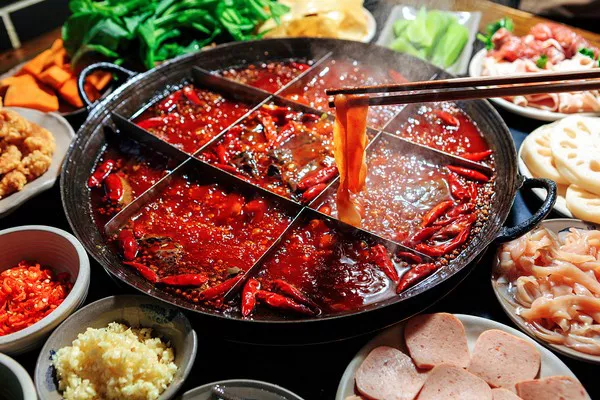Spicy food has long been an integral part of Chinese cuisine, renowned for its vibrant flavors and mouth-watering heat. From tongue-tingling Sichuan dishes to fiery Hunan specialties, Chinese cuisine embraces the love for spice in a way that sets it apart from many other culinary traditions. In this article, we delve into the cultural, historical, and geographical factors that contribute to the Chinese people’s affinity for spicy food. By exploring the roots of this fiery passion and the impact it has on Chinese culinary traditions, we gain a deeper understanding of why spicy food holds a special place in the hearts and palates of the Chinese people.
Historical and Cultural Significance
a. Ancient Roots: Spices have been used in Chinese cuisine for thousands of years, with historical records documenting their presence as early as the Tang Dynasty. The Silk Road trade routes played a significant role in introducing spices, such as chili peppers, to China.
b. Traditional Chinese Medicine: The principles of Traditional Chinese Medicine (TCM) emphasize the balance of Yin and Yang energies within the body. Spicy foods, known for their warming properties, are believed to help invigorate the body and promote circulation.
c. Symbolic Meanings: In Chinese culture, spice is associated with vitality, strength, and good fortune. Spicy dishes are often served during festive occasions and celebrations, symbolizing the desire for an auspicious and spirited atmosphere.
Geographical Influences
a. Sichuan: Sichuan province, known for its bold and numbing flavors, is one of the culinary capitals of China. The region’s hot and humid climate is believed to have influenced the development of a spicy cuisine to combat the dampness and enhance digestion.
b. Hunan: Hunan cuisine, characterized by its robust and fiery flavors, is heavily influenced by the region’s hot and humid climate. The consumption of spicy foods is believed to help stimulate sweat and cool the body in these conditions.
c. Guizhou and Yunnan: These southwestern provinces boast a cuisine that showcases a balance of spicy, sour, and smoky flavors. The mountainous terrain and diverse ethnic communities contribute to the use of a wide range of spices and chilies in their culinary traditions.
d. Xinjiang: Located in China’s northwest, Xinjiang is known for its bold and spicy Uyghur cuisine. The region’s proximity to Central Asia and the Silk Road trade routes has influenced its culinary repertoire, including the use of chili peppers and spices.
Flavor Enhancement and Culinary Balance
a. Mouthwatering Sensations: The addition of spice to Chinese dishes enhances the overall flavor profile, adding depth, complexity, and a satisfying kick. The combination of heat, aroma, and nuanced flavors keeps diners engaged and craving more.
b. Appetite Stimulation: Spicy food is believed to stimulate the appetite by increasing saliva production and activating the taste buds. It adds excitement to meals and encourages a more robust dining experience.
c. Balancing Ingredients: Spicy ingredients, such as chili peppers and Sichuan peppercorns, are often used in Chinese cuisine to balance other flavors. They can help cut through richness, counteract sweetness, and add a layer of complexity to a dish.
Health Benefits and TCM Perspective
a. Warming Properties: Spicy ingredients, such as chili peppers, ginger, and garlic, are believed to have warming properties according to TCM. They are thought to help promote circulation, aid digestion, and strengthen the body’s Qi (vital energy).
b. Capsaicin and Health Effects: Capsaicin, the compound responsible for the heat in chili peppers, has been linked to various health benefits. Studies suggest it may have anti-inflammatory properties, aid weight management, and support cardiovascular health.
c. Cooling Effects in Hot Climates: Paradoxically, spicy food is often consumed in hot climates. The sensation of heat from spicy food can induce sweating, which helps cool the body and provides relief in warm and humid environments.
Culinary Diversity and Adaptation
a. Regional Variations: Each region in China has its distinct approach to spiciness, resulting in a diverse culinary landscape. Sichuan, Hunan, Yunnan, and other provinces offer unique interpretations of spice, reflecting local ingredients and cultural traditions.
b. Culinary Adaptation: Chinese cuisine has also adapted to cater to different taste preferences around the world. In regions like Hong Kong and Taiwan, milder versions of dishes are available to accommodate those who prefer less heat.
Conclusion
The love for spicy food in Chinese cuisine is deeply rooted in cultural, historical, and geographical influences. From the balancing principles of Traditional Chinese Medicine to the regional variations in flavors and heat, spice plays a significant role in shaping the culinary landscape of China. Spicy dishes are cherished for their ability to stimulate the senses, enhance flavors, and create a vibrant dining experience.

